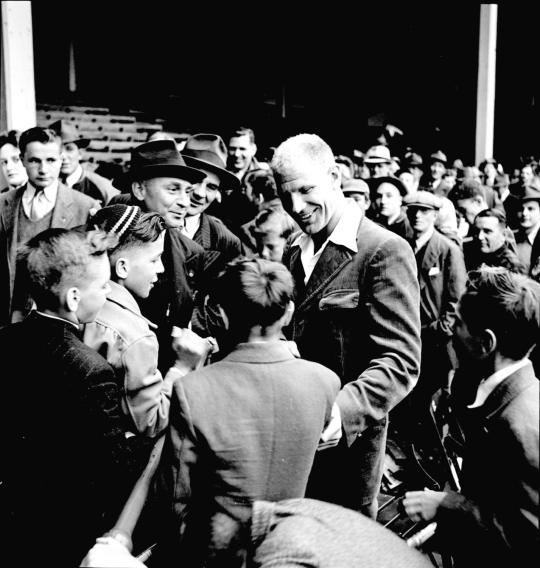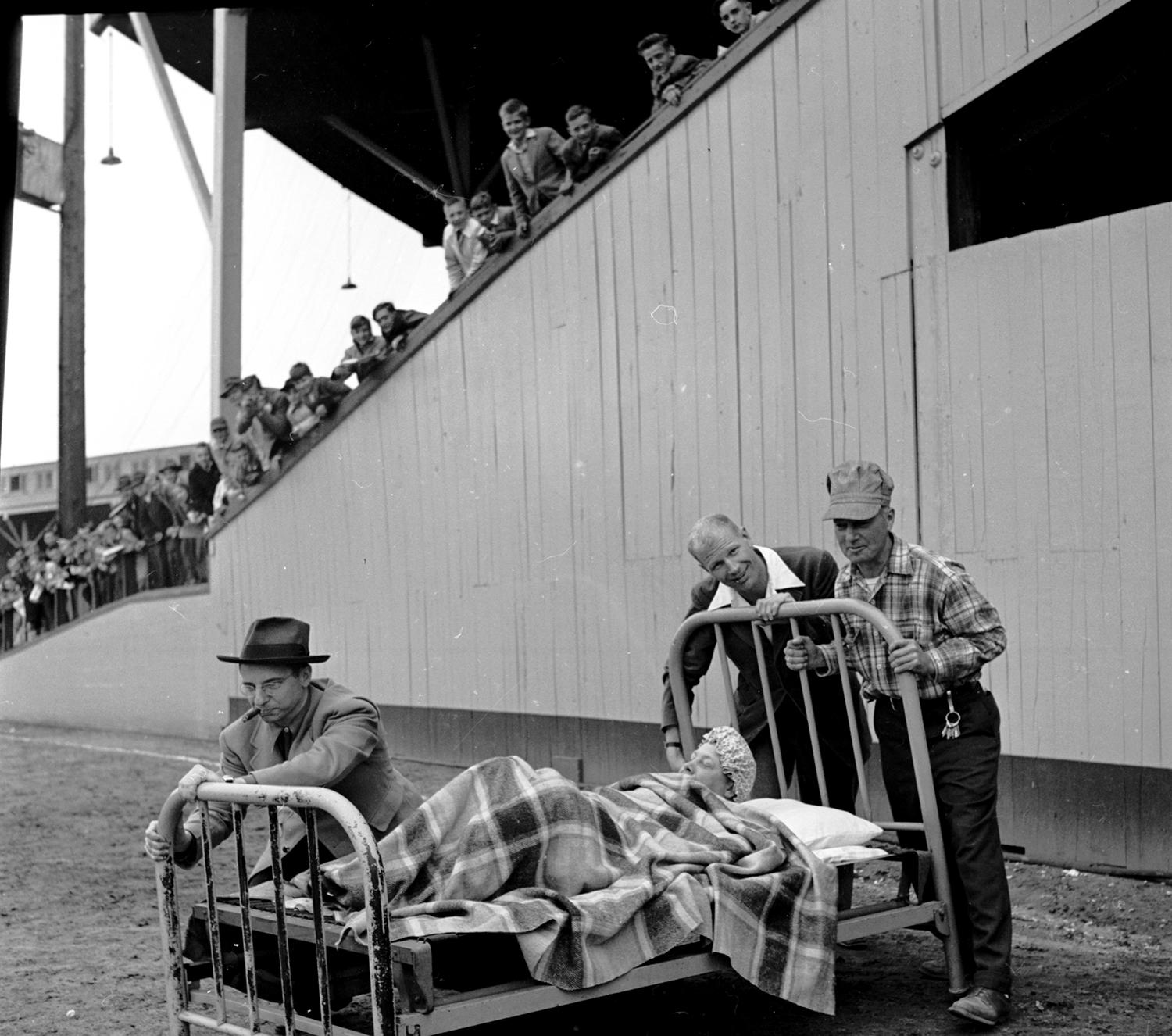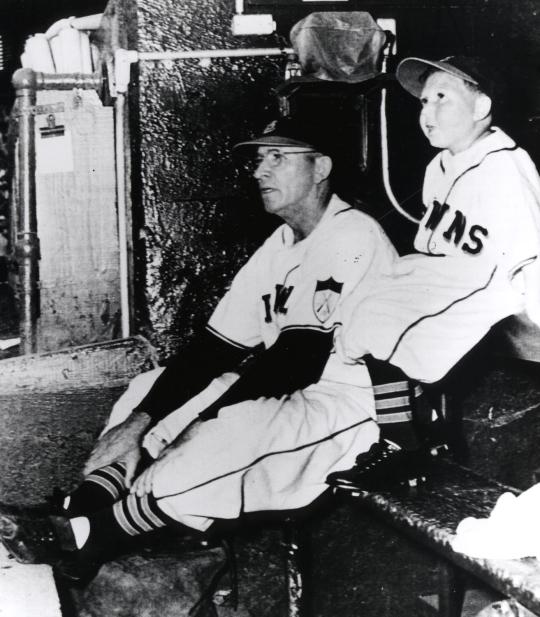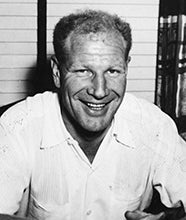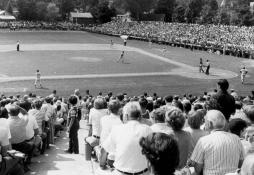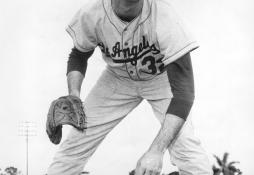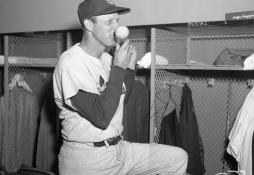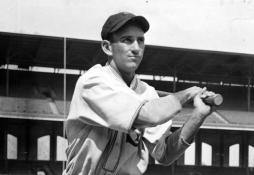- Home
- Our Stories
- Bill Veeck, Eddie Gaedel and the Birth of Legend
Bill Veeck, Eddie Gaedel and the Birth of Legend
Throughout his career as a baseball executive, Hall of Fame owner Bill Veeck was known for his innovative promotions.
On Aug. 19, 1951, Veeck executed one of the more memorable events in his career, making baseball history in the process.
In the midst of a lost season for his St. Louis Browns and needing to drum up a buzz, Veeck, as he always seemed to do, devised a plan to draw fans to the ballpark.
“I try not to break the rules but merely to test their elasticity,” Veeck said of his approach.
Veeck – who was inducted into the National Baseball Hall of Fame and Museum in 1991 – had the idea to use Eddie Gaedel as a pinch-hitter in the second game of a doubleheader against the Detroit Tigers.
Gaedel, a little person standing at 3-foot-7, would become the shortest player to appear in a Major League Baseball game, as he led off the game as a pinch hitter.
While his arrival would spark controversy, the crowd’s reaction to Gaedel’s appearance in the game was undeniable. He was lauded repeatedly by the fans, given a standing ovation as he strolled up to the plate, donning a uniform with the number “1/8” on the back.
Armed with a small strike zone and Veeck’s orders not to swing, Gaedel would draw a four-pitch walk against Tigers starter Bob Cain, in what would be his only career plate-appearance.
As he trotted to first base, the fanfare continued as Gaedel was lifted for a pinch-runner. He would end his career with a perfect on-base percentage of 1.000.
Gaedel’s achievement is recognized by the Hall of Fame. The life-size cutout of his stance is fittingly displayed on exhibit next to the uniform of 6-foot-11 former reliever Jon Rauch – as the tallest and shortest men ever to play in the majors are juxtaposed next to each other by the Museum.
Following the game, Gaedel’s contract would be voided by MLB and he would never appear in another game, his perfect OBP kept intact. The Browns would lose the game 6-2, one of their 102 losses for the season, but for that night they were the talk of baseball.
As for Gaedel, he may not have played again – but for a brief period of time the spotlight shone brightly on him.
“For a moment, I felt like Babe Ruth,” he said.
Ryan Turnquist was a public relations intern in the Frank and Peggy Steele Internship Program at the National Baseball Hall of Fame and Museum

